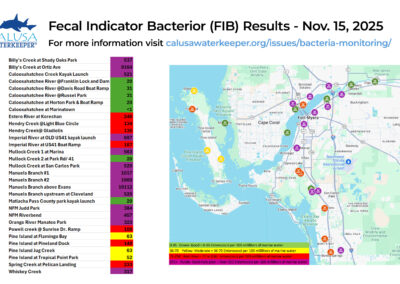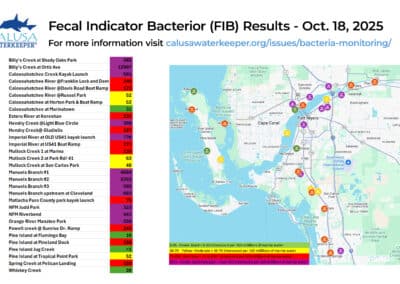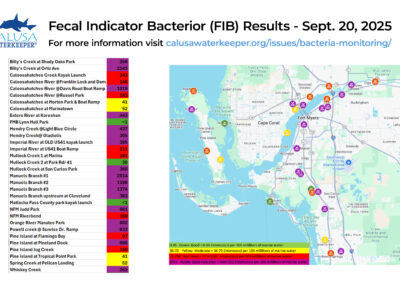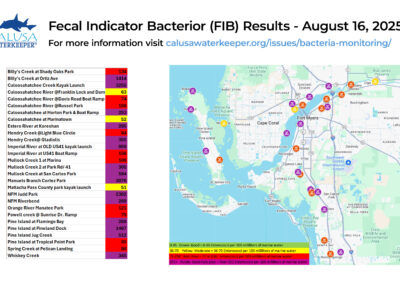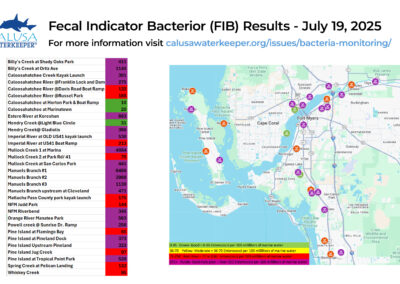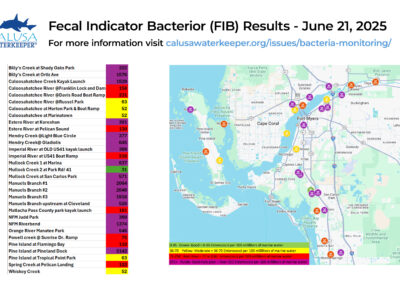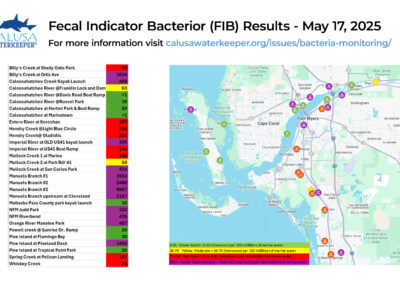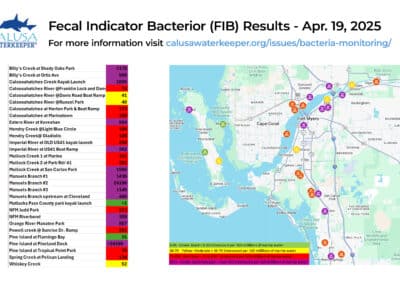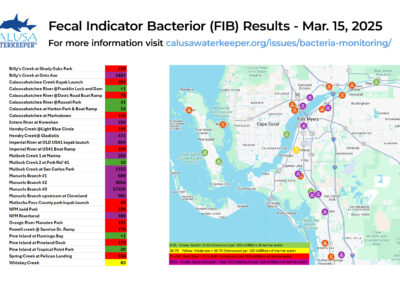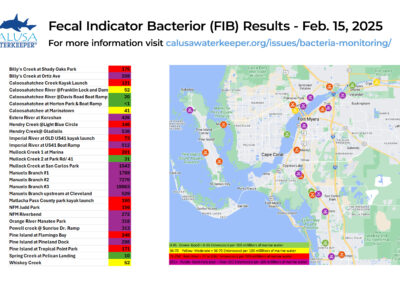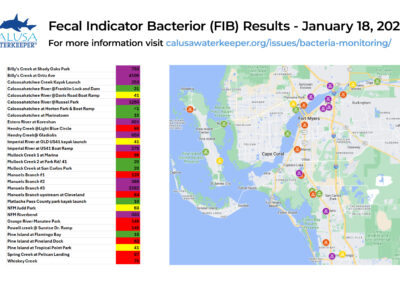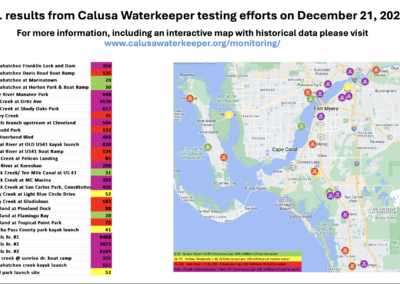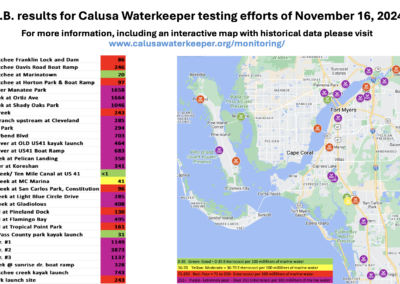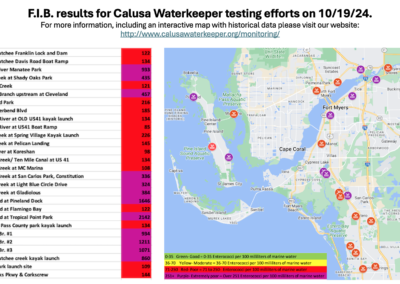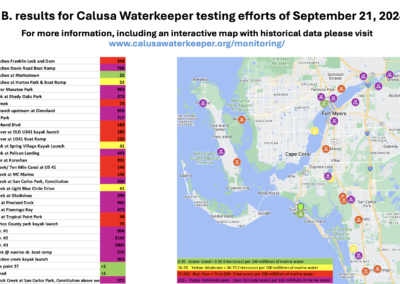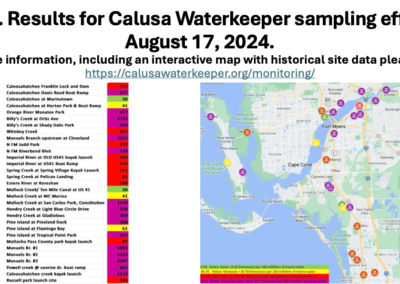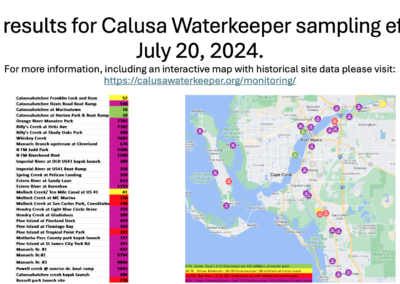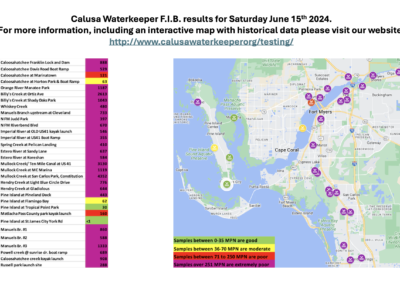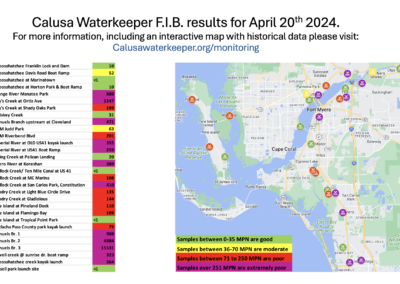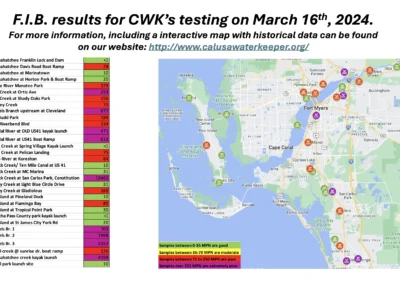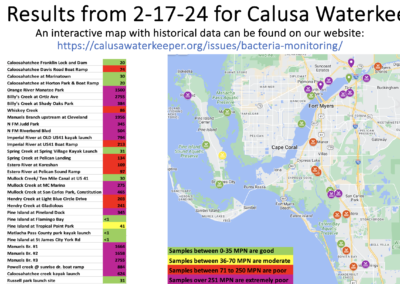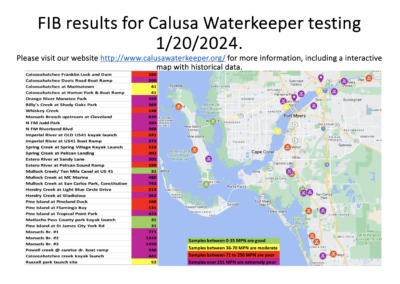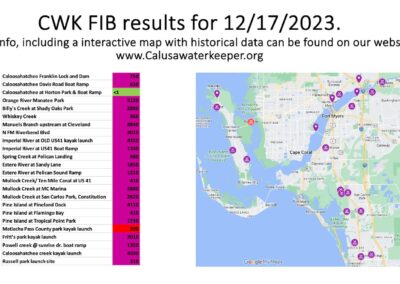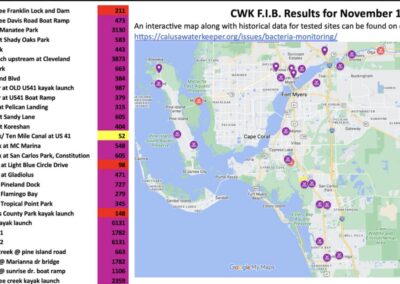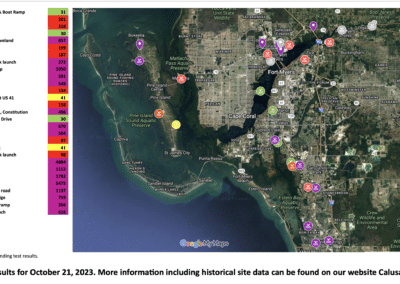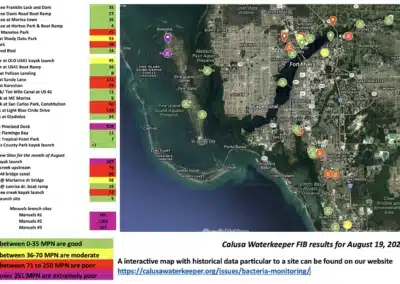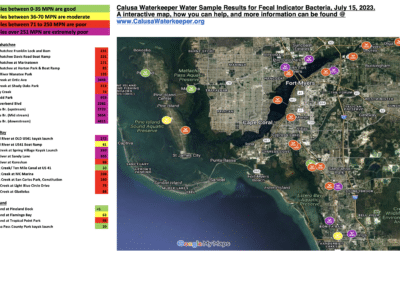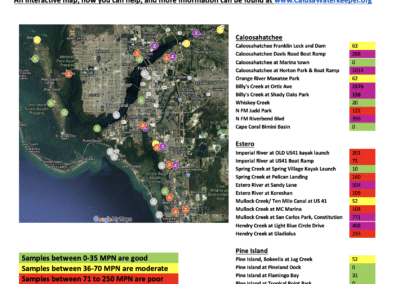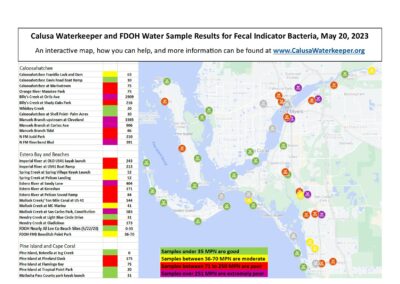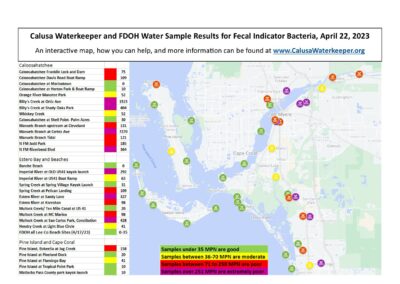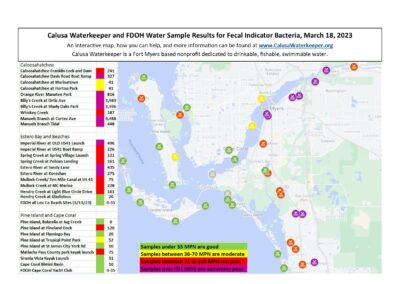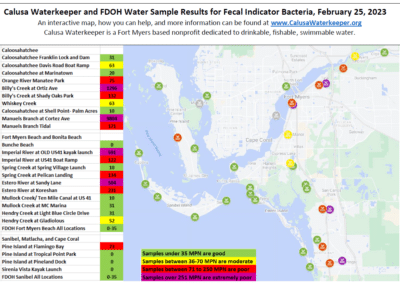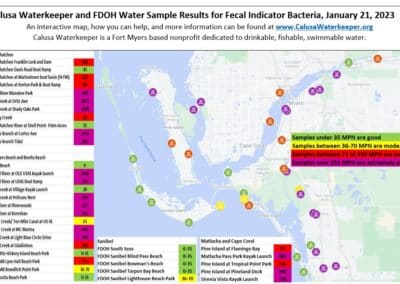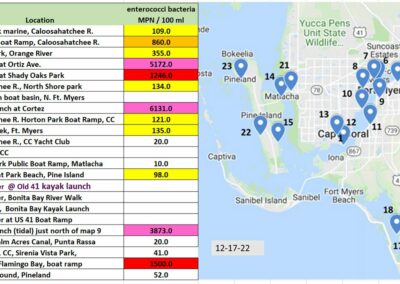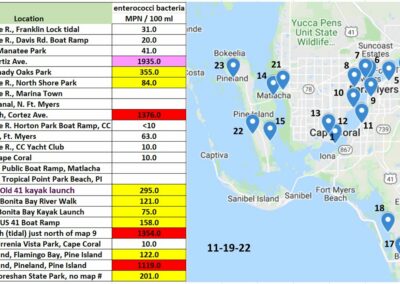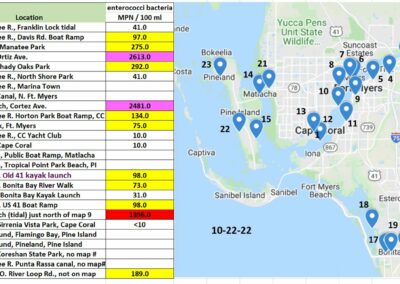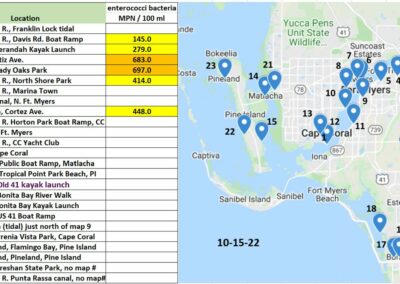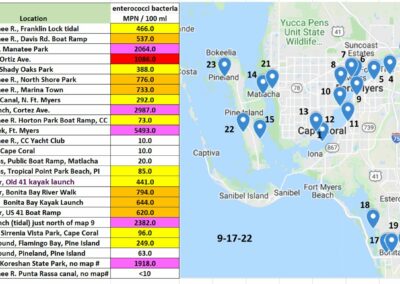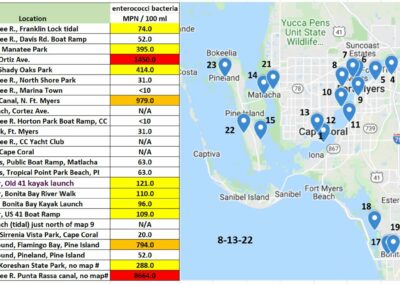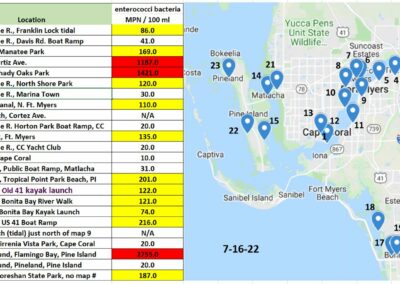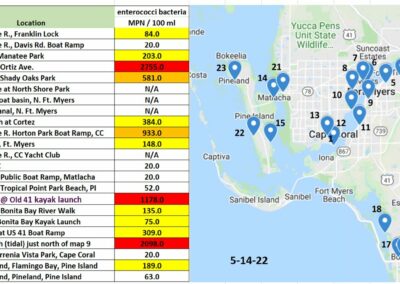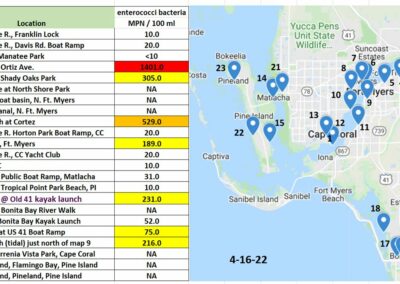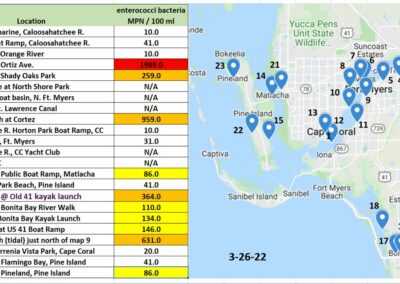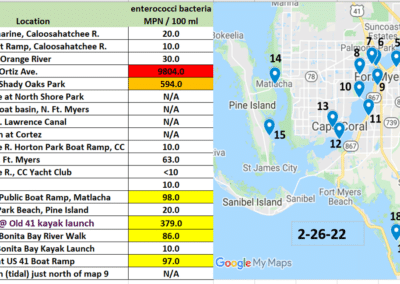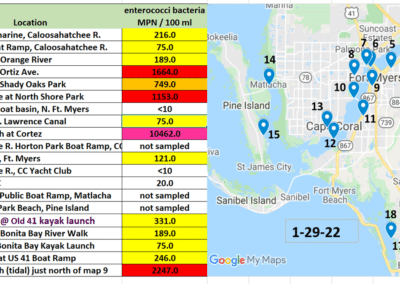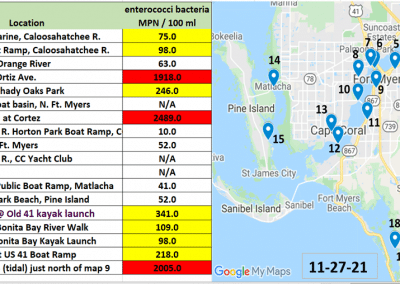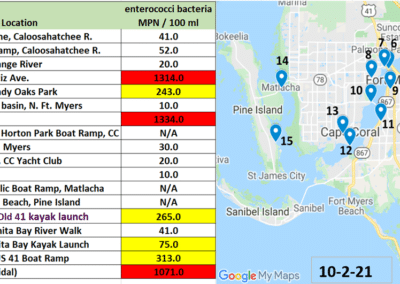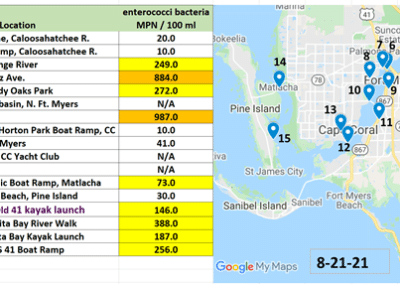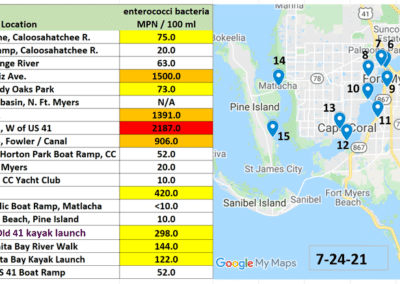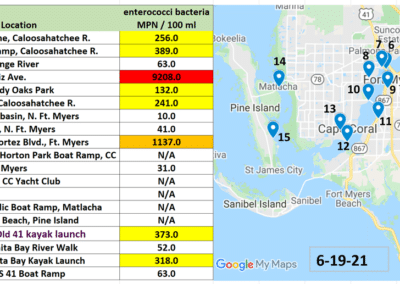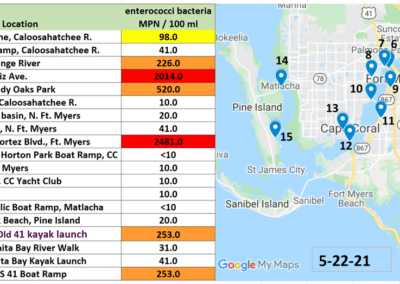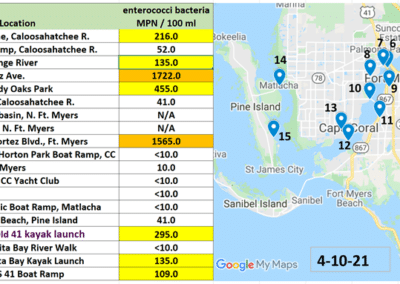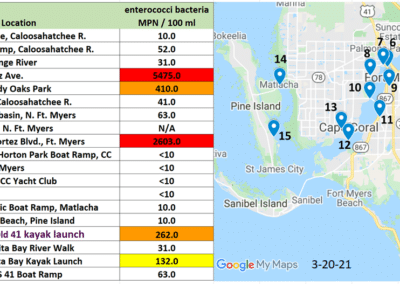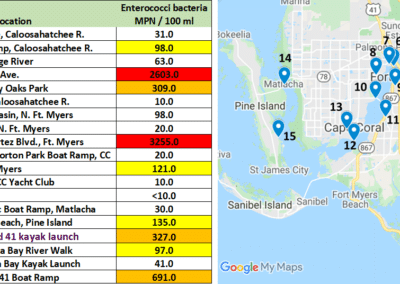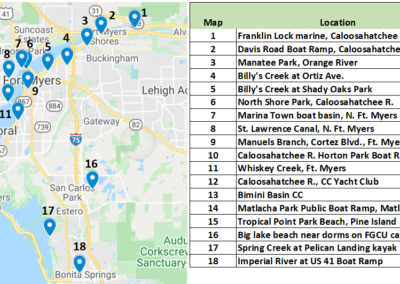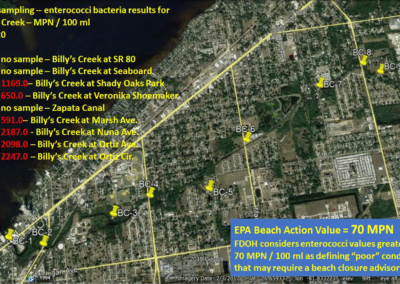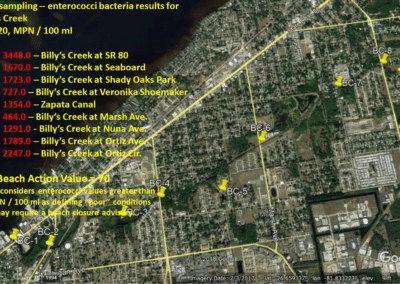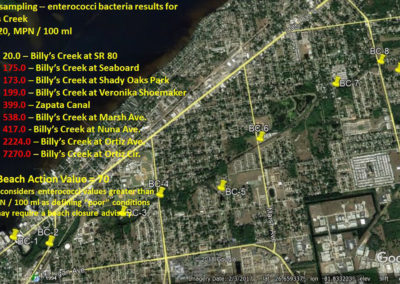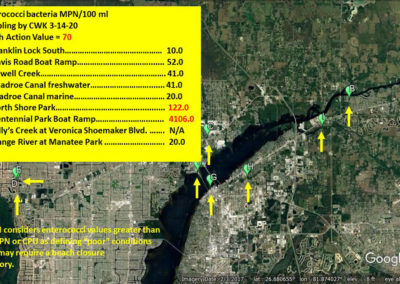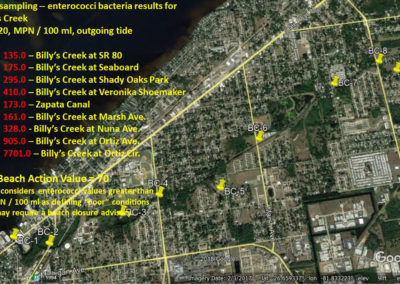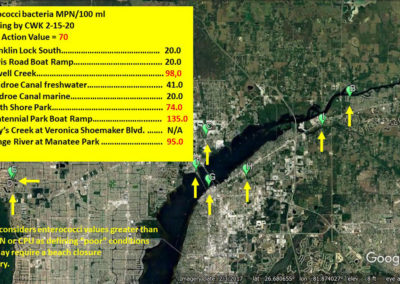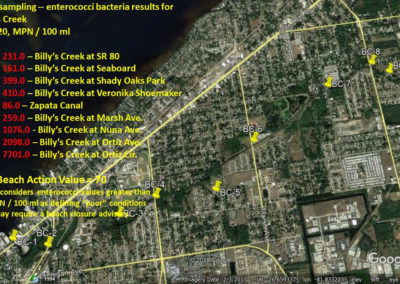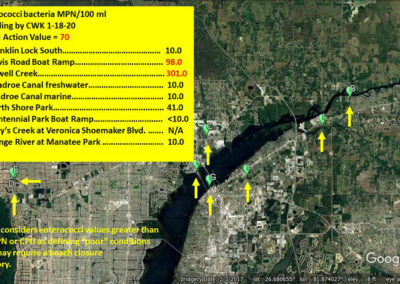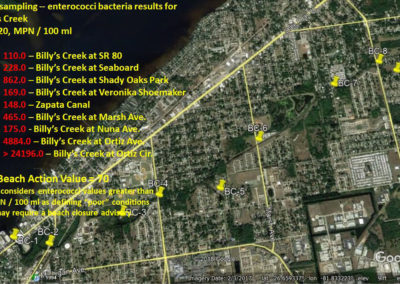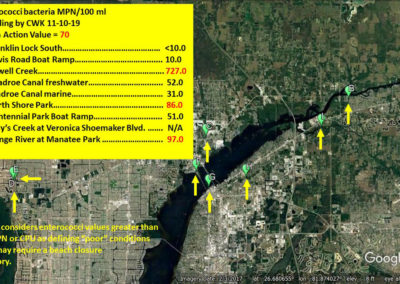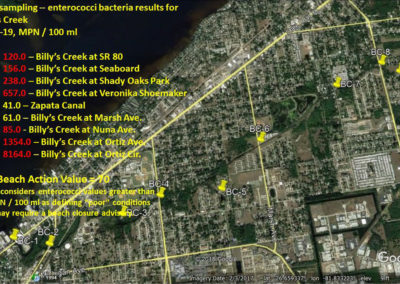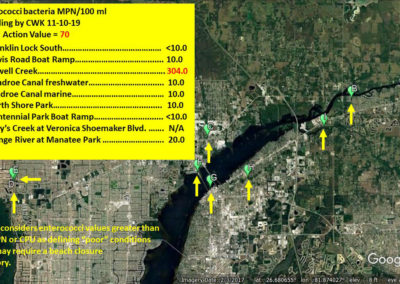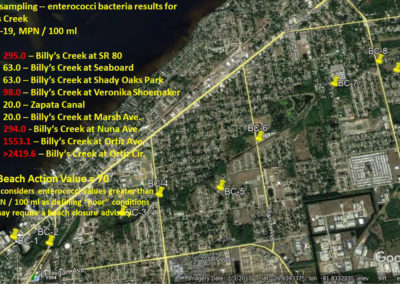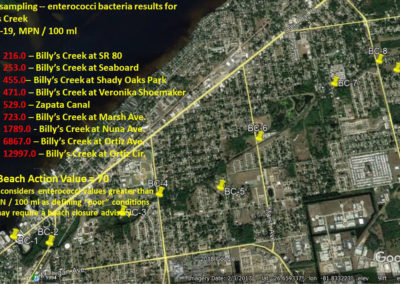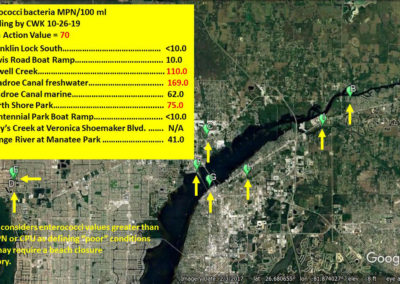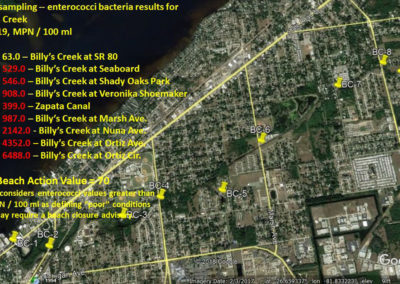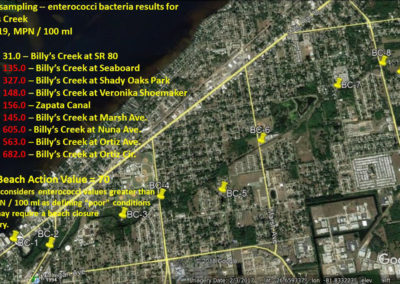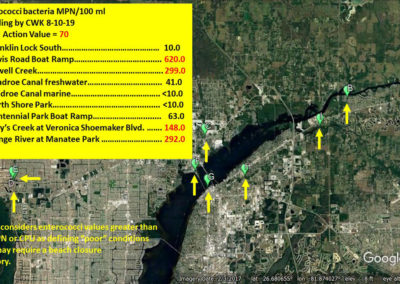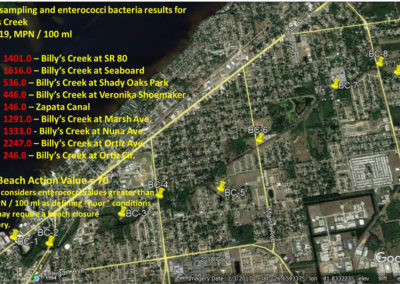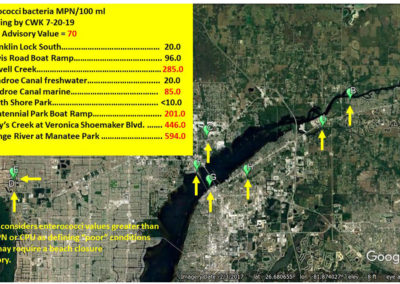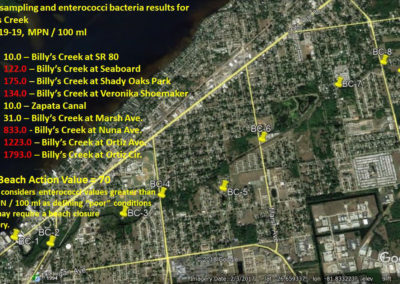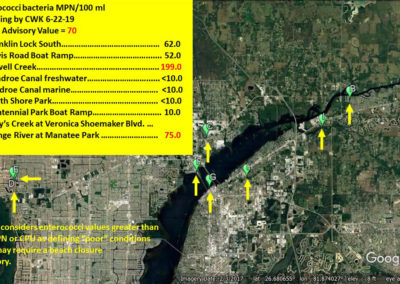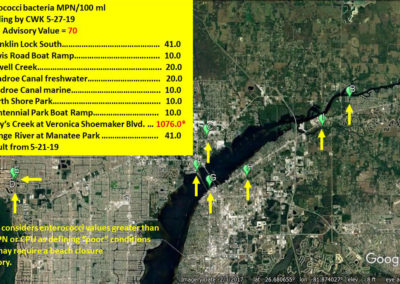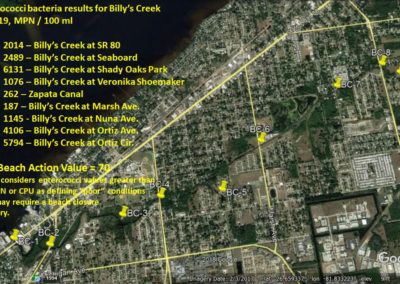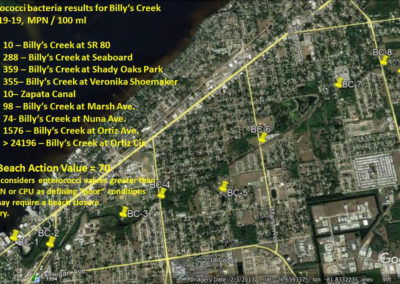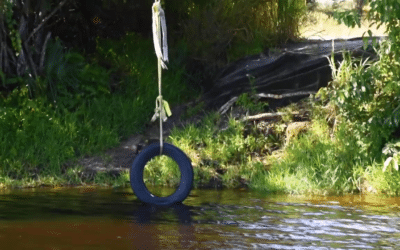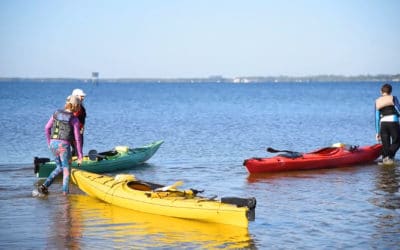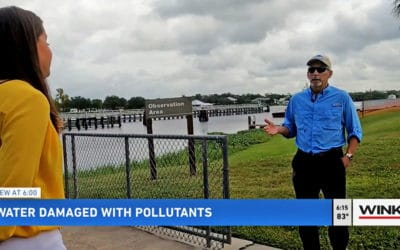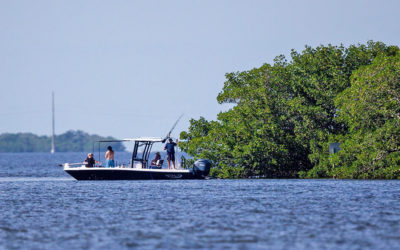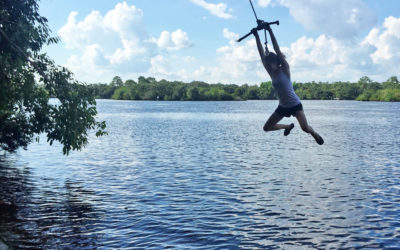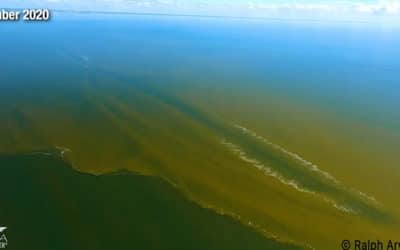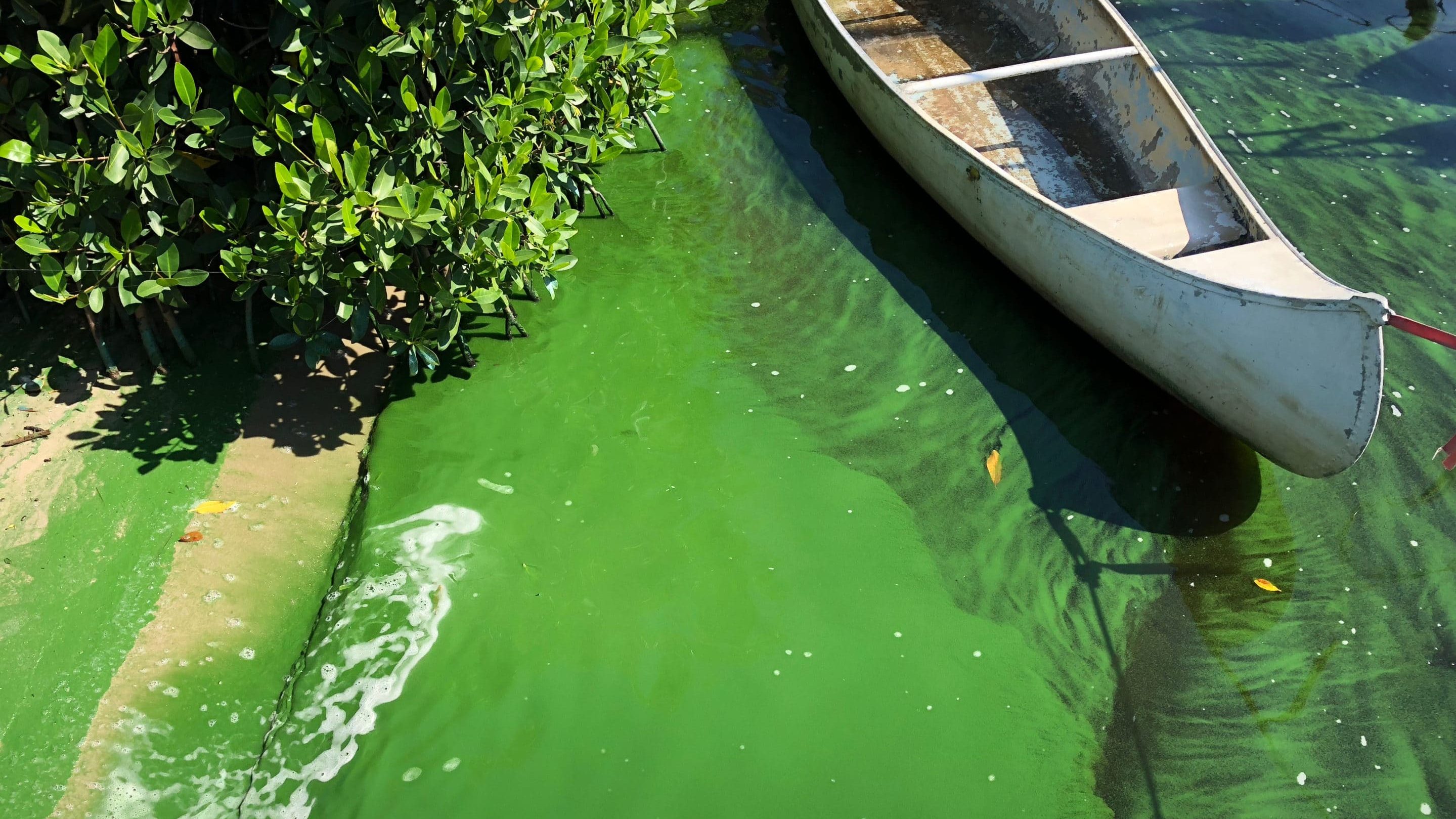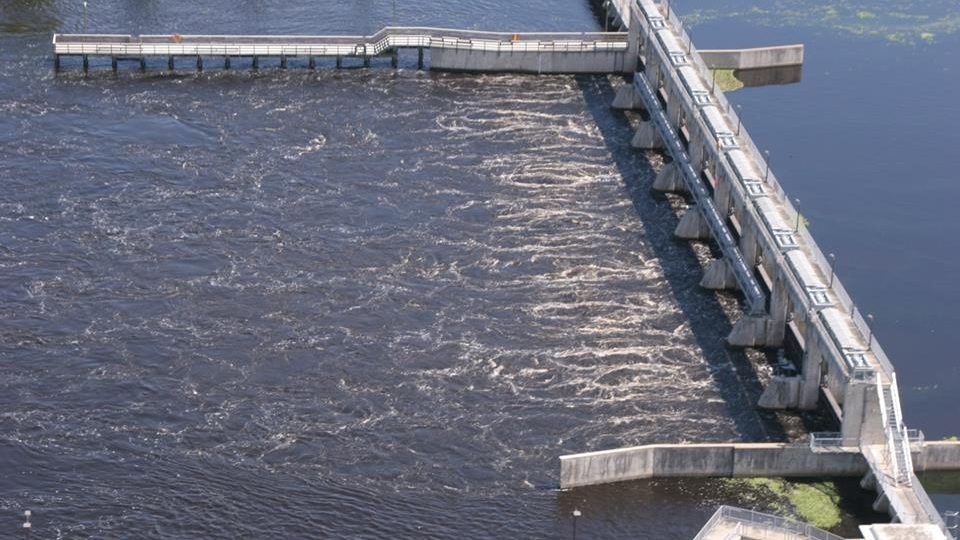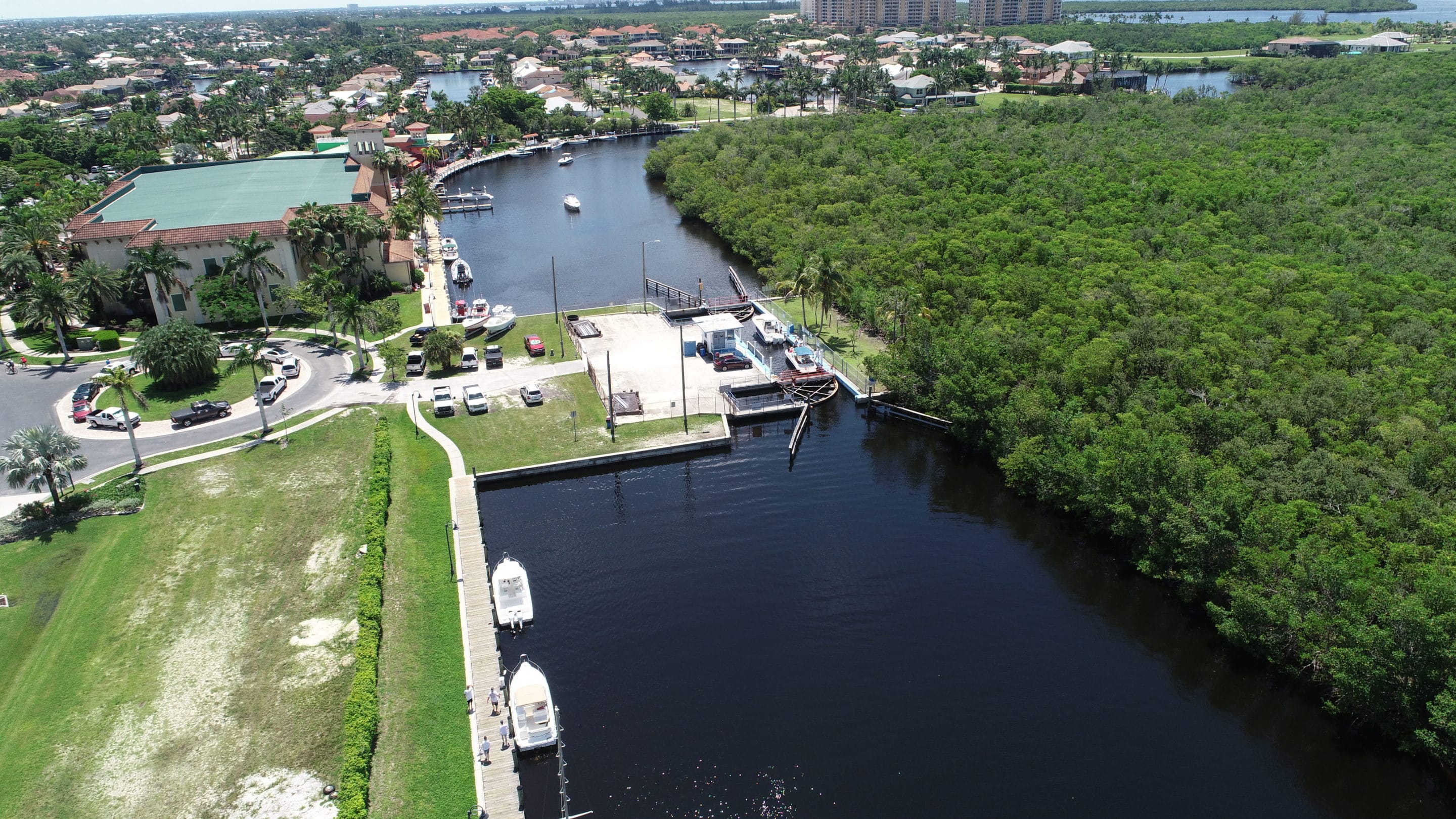Issue:
Bacteria Monitoring
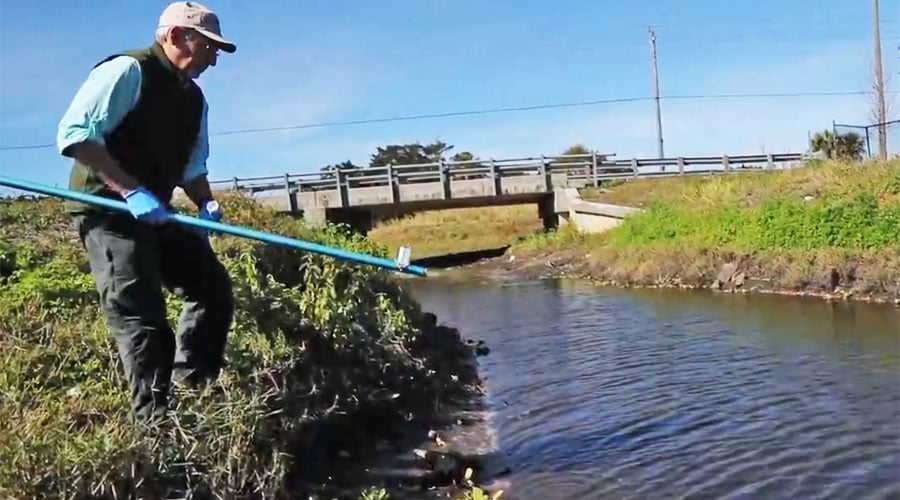
Fecal Indicator Bacteria (FIB)
Bacteria contamination plaguing Florida waterways has arguably reached a crisis point. For example, Billy’s Creek and Manuel’s Branch, tributaries flowing into the Caloosahatchee near downtown Fort Myers, have long been a hot spot for Enterococci bacteria. Enterococcus is used as an indicator of fecal contamination which can carry disease-spreading bacteria, viruses and parasites.
Independent testing of several Lee County waterways is routinely performed by Calusa Waterkeeper staff and volunteer rangers. Test results are determined in our independent lab and at Florida Gulf Coast University (FGCU) depending on the number of samples. Calusa Waterkeeper’s close watch of local creeks has compelled more monitoring by the Florida Department of Environmental Protection.
Enterococci bacteria can cause gastrointestinal illness, infections and rashes. Fecal indicator bacteria tests high in several Southwest Florida creeks both in the wet and dry season, but is commonly driven by stormwater runoff which carries bacteria into area waterways.
Updates & Action
Fecal Indicator Bacteria (FIB) Sampling
The data in this interactive map includes the latest Calusa Waterkeeper test sites. Click on a site to get more information and note the last date of sampling.
- It should be noted that we are not measuring or observing fecal matter in the water. These tests measure for fecal indicator bacteria, specifically enterococci.
- Bacteria sampling results show occurrences of serious contamination, especially in the upper reaches of Lee County tributaries.
- Contamination values have routinely been found at many times the EPA Beach Action Value of 70 MPN.
- Even with these high levels of contamination, few if any warning signs are typically posted.
- Both Lee County and city officials are aware of this issue.
FIB Sampling Archives
(click images to enlarge view)
Related News Stories
Fecal Indicator Bacteria
Proposed Law Would Warn of Poop-polluted Waters Where People Boat, Wade and Fish
A new bill championed by the nonprofit Calusa Waterkeeper introduced this week in the Florida Senate would close that gap in the nearly million acres of estuaries and 9,000 miles of streams and rivers the state has verified are polluted with fecal indicator bacteria.
Florida Legislators Introduce Safe Waterways Act
State Senator Lori Berman and State Representative Yvonne Hayes Hinson recently filed SB 604 and HB 393, termed the “Safe Waterways Act.” The legislation will require county health departments to post and maintain warning signs at additional public bathing places that have been verified impaired for enterococci bacteria by the Florida Department of Health.
Report Shines Spotlight on Southwest Florida’s Water Issues
A state report shows trouble in Southwest Florida’s water. Scientists warn that areas of our water are polluted with nutrients and bacteria. While the findings are no surprise to those who sample and study our waterways, the unwanted attention could be a much-needed wake-up call.
Pollution Verified in Most of Southwest Florida Area’s Prized Water Bodies
What’s been long suspected now is official: Southwest Florida’s most cherished waters are in trouble. From Charlotte Harbor south to San Carlos Bay, a draft state report shows widespread pollution from the fertilizer nitrogen and the algae byproduct, chlorophyll. Many of them also contain unhealthy levels of fecal bacteria.
Floridians Have the Right to Know if Public Waters they Recreate in are Safe from Contamination
The current Florida Department of Health (FDOH) policy at the county level is inconsistent. The only waters routinely monitored are the coastal beaches. It’s rare when signage warning of fecal bacteria is implemented, often at the discretion of local politicians who have no training in public health.
Words from the Waterkeeper, Episode 21
This week, Calusa Waterkeeper John Cassani, informs us of Lake Okeechobee and the ongoing releases from the Army Corps of Engineers into the Caloosahatchee. There has also been a recent spike in red tide along the gulf.
Make a Donation
Get Notified
Priority Issues
Harmful Algal Blooms
Cyanobacteria & Red Tide
Cyanobacteria (blue-green algae) and Karenia brevis (red tide) have been making major impacts on Southwest Florida.
Lake Okeechobee Discharges
Revise System Operating Manual
The Caloosahatchee River often suffers from too much freshwater in the wet season, and not enough freshwater in the dry season.
Cape Coral Spreader Canals
Nutrient & Sediment Loading
The City of Cape Coral is working to remove large storm-water barriers to make recreational boating more convenient.
Bacteria Monitoring
Fecal Bacteria
Calusa Waterkeeper has been at the forefront of monitoring this Fort Myers tributary for fecal bacteria indicators.


























